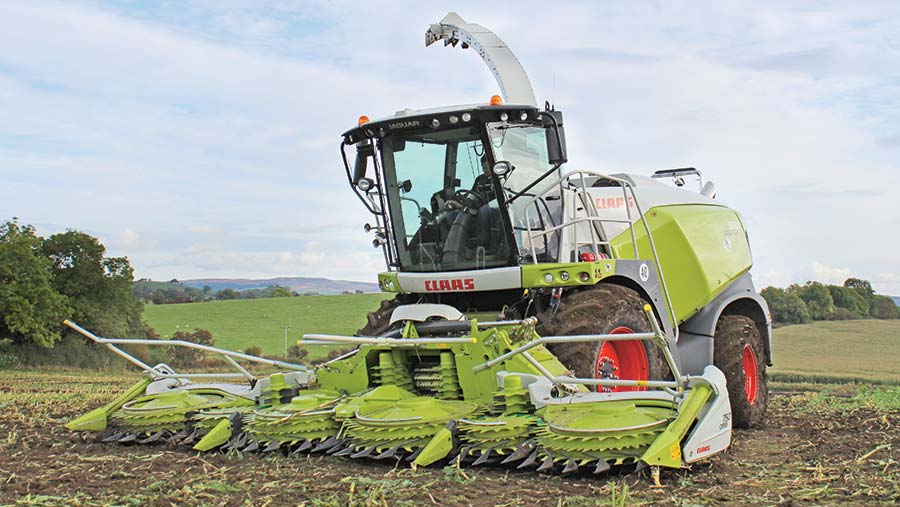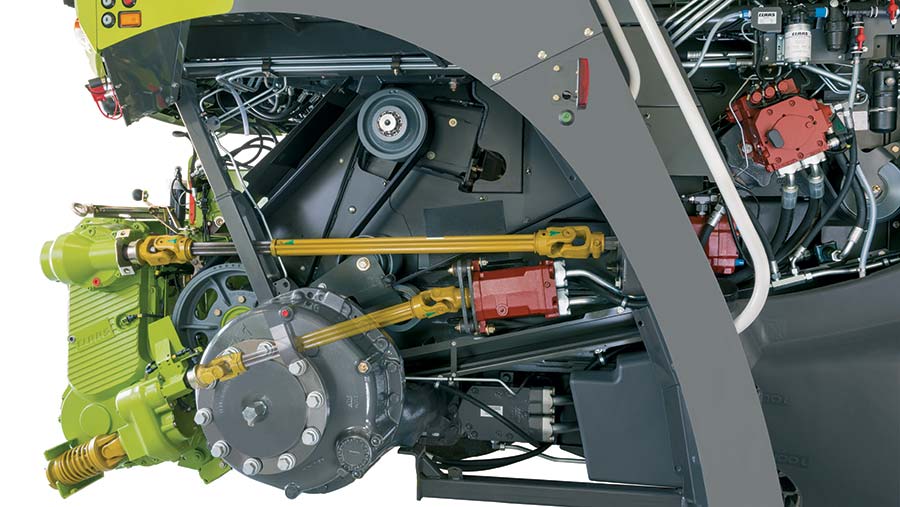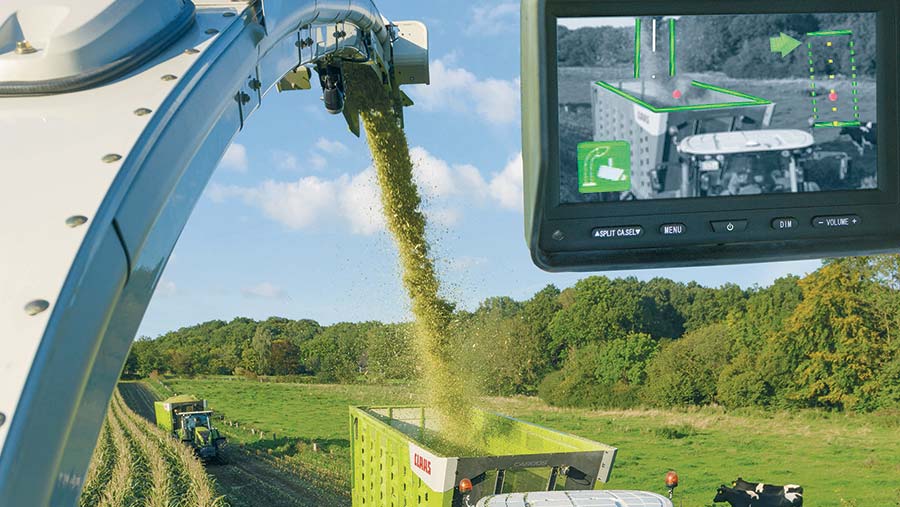Claas 900-series forage harvesters get transmission upgrade
German machinery maker Claas has been hard at work adding a host of new features to its two biggest Jaguar self-propelled forage harvesters.
Most of the tweaks have been aimed at increasing output and cutting fuel use, but the most obvious change to the revamped 970 and 980 models is the curvier tinwork.
German machinery maker Claas has been hard at work adding a host of new features to its two biggest Jaguar self-propelled forage harvesters.
Most of the tweaks have been aimed at increasing output and cutting fuel use, but the most obvious change to the revamped 970 and 980 models is the curvier tinwork.
This has been given a larger vented area to improve cooling and is now formed in one piece so that there’s easier access for maintenance and for hauling the corn cracker in and out.
See also: NAAC farm contractor charges 2016-17
Claas has also decided to switch back to steel panels rather than plastic, which should have the bonus of making it easier to polish any scratches out of the paintwork.
More important upgrades from a performance point of view include a new optional continuously variable front attachment drive.
This is designed to work with the maker’s Orbis maize header and Pick Up grass attachment, and varies the speed of the implement to match that of the feed rollers.
This means the header and feed rollers should work together perfectly at any chop length, rather than fighting against each other. The driver can also adjust the speed manually according to the conditions.
Chopping wholecrop
For those cutting a lot of bulky wholecrop, there is now the option of a split mechanical and hydrostatic drive for Direct Disc headers.
This gives a more powerful drive than the base-spec mechanical system and ensures the discs spin at a constant speed.
Another move to improve chop quality is the reinforced sharpening system. This has been beefed up to take out any flex in the sliding sharpening tool.
Claas says this means it does a better job of honing the centre of the knives, which improves output and chop quality. It should also make them last a bit longer.
Other upgrades in the chopping department include hydraulic shear bar adjustment and an automatic concave that closes up as the blades on the chopping cylinder wear.
This helps maintain the forager’s efficiency throughout the life of the blades, so that performance does not tail off.
To make life easier for the operator, Claas has upgraded its auto-fill system so that it also works at the rear when breaking out into a new field.
Pressing a button on the in-cab screen activates the new zoom camera so that it can focus on trailers being towed by tractors behind the forager.
When engaged, the system will automatically move the spout from side to side, meaning the driver only has to worry about adjusting the angle of the flap.
Transmission upgrades
The Germans have done a fair bit of work to the driveline. The old single hydrostatic motor has been ditched for a twin-motor system, which delivers a lot more torque.
The uprated transmission also allows the forager to get up to 40kph at just 1,290rpm, which should save some fuel on long hauls between fields.
To reduce fuel use further, Claas has introduced an auto throttle system that reduces engine revs on the headlands.
This senses when the feed rollers are closed and free from crop, before dropping the engine revs.
It then quickly ramps them up again when the header is dropped so that everything is up to full speed before crop starts coming in.
There is also an optional three-mode limited slip differential to help keep moving in particularly challenging conditions and an auto handbrake that comes on as soon as the driver hops off the seat.
Those that have an aversion to Adblue and complicated emissions gubbins will be pleased to hear that Claas has been able to stick with the same simple MAN powerplants.
As both the 775hp, 16-litre V8 in the 970 and the huge 884hp, 24-litre V12 in the 980 sit above the magic 750hp threshold, they are exempt from the latest regulations for a couple more years.
The facelifted 970 and 980 machines will be available early next year in limited numbers, but the other four models in the range will be unchanged for the 2017 season.
According to Claas, the 900-series now accounts for 40% of all Jaguar forager sales and roughly half of these are the 970 model.
2017 Claas Jaguar 970 and 980 |
||
|
970 |
980 |
|
|
Engine |
MAN 16-litre V8 |
MAN 24-litre V12 |
|
Power |
775hp |
884hp |




